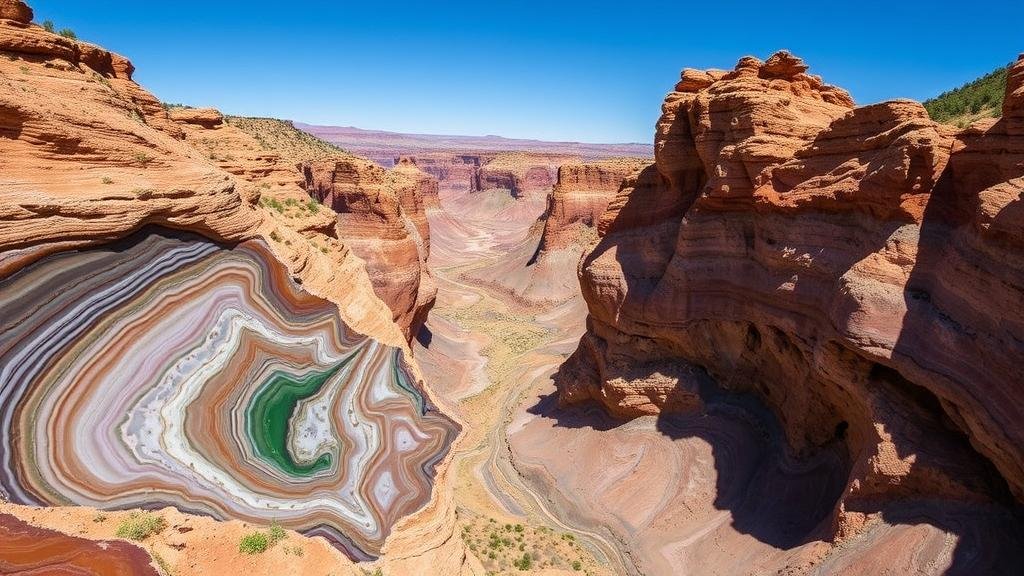Hidden Agate Valleys: Discovering Gem-Rich Rock Formations in Remote Landscapes
Introduction to Hidden Agate Valleys
Hidden agate valleys are fascinating geological formations that offer rockhounds and mineral collectors a unique opportunity to explore natural gem deposits. These concealed areas provide an abundance of agate, a variety of chalcedony, characterized by its fine bands and rich colors. This article delves into the origins, locations, and treasure-hunting techniques related to hidden agate valleys, assisting both novice and seasoned collectors.
Geological Formation of Agate
Agate is formed from the deposition of silica in concentric layers within volcanic rocks, often filling cavities and fractures. presence of mineral impurities leads to the striking colors and patterns found in agate. The geological processes that create these spectacular formations can take millions of years, primarily occurring in environments rich in volcanic activity. This intricate layering not only makes for a beautiful stone but also a fascinating subject of study for geology enthusiasts.
The Science Behind Agate
The hallmark of agate is its banding, which typically measures between 1mm to 10mm in thickness. colors are influenced by mineral elements such as iron (which can create reds and oranges), manganese (which can yield purples), and copper (leading to greens). Notably, the transparency of agate can range from translucent to nearly opaque, adding to its appeal in jewelry making and crafting.
Locations of Hidden Agate Valleys
While agate can be found worldwide, certain regions are particularly renowned for their hidden valleys rich in these gemstones. Locations such as:
- Oregon, USA: Known for its stunning lace agate, particularly in the areas surrounding the John Day River.
- Thunder Bay, Canada: Hosts an impressive assortment of agate types, including the striking banded agate.
- Mexico: The Laguna and Chihuahua areas produce some of the world’s most colorful and richly patterned agates.
Each of these locations presents unique opportunities for collectors, and exploring these areas can yield impressive finds. Researching local laws and guidelines about rock collecting is crucial to ensure responsible and ethical practices.
Rockhounding Tips for Finding Agate
When venturing into hidden agate valleys, preparation and knowledge are key to successful rockhounding. Here are several practical tips:
- Research: Investigate the specific geology of an area before visiting. Understanding the types of agate found locally can improve your chances of success.
- Timing: The best times to collect are typically after heavy rainfall, or during spring thaw, as water can wash away loose debris and expose agate.
- Equipment: Bring tools such as hammers, chisels, and safety goggles. Also, a sturdy bag to carry your finds is essential.
- Join Local Groups: Connecting with local rockhounding clubs can provide valuable insight and access to sites you may not discover alone.
Ethical Rockhounding Practices
It is vital for mineral collectors to engage in ethical rockhounding practices. This includes respecting private property, following local mining laws, and ensuring that the landscape is preserved for future explorers. Only take what you need and ensure your collecting habits do not damage the environment or disturb local wildlife.
Conclusion: The Joy of Discovery
Exploring hidden agate valleys offers not just the thrill of discovery, but also a chance to connect with nature and appreciate the geological wonders of our planet. Agate collection can be a rewarding hobby that fosters patience, respect for nature, and a sense of adventure.
As you set out to explore these majestic formations, remember to embrace the journey as much as the destination. With every rock you uncover, you gain insight into the Earth’s history and its natural beauty.



